Are you looking to start trading without risking your hard-earned money? Paper trading apps offer a solution for beginners traders to practice there trading strategies. The Indian stock market is growing rapidly, and finding the best paper trading app can be a game-changer for traders.
Before investing in the real market, beginners traders can improve their skills and techniques in a risk-free environment with paper trading. This article you will explore what paper trading is, paper trading pros and cons, and highlight some popular Indian paper trading apps.
So, Let’s dive into the top 10 best Paper Trading Apps in India.
What is Paper Trading?
Paper trading, also known as virtual trading is a simulated stock trading scenario that is meant to educate new investors. Paper trading is performed similar to a way real trading but it doesn’t involve the use of real money. Its first and foremost purpose is to help investors get acquainted to stock trading basics and different trading strategies that can be quite useful for new investors in a real stock trading scenario. This also helps them in tracking their stock placements and portfolio in a simulated trading environment.
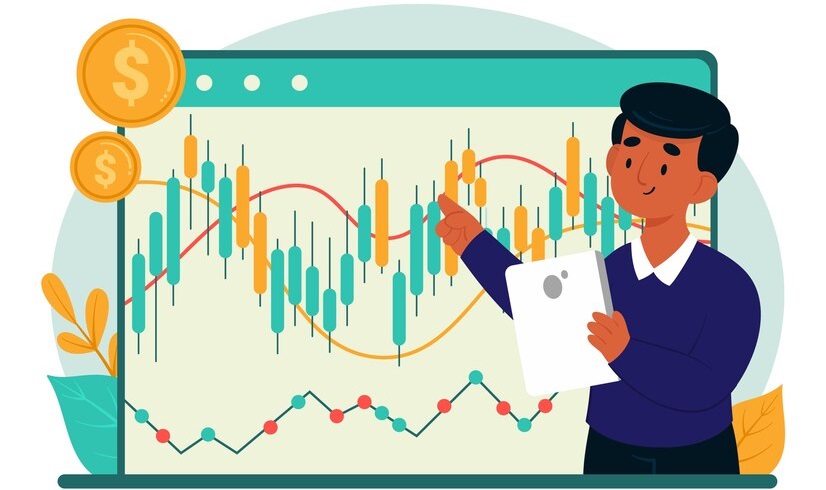
The majority of paper trading accounts trade on the stock exchange. Simulators operate quite similarly to a real trading account. Any genuine trading platform allows you to utilize the majority of order types, trade a variety of stocks, and test out a number of features. These trading strategies do have some limits, though, as they don’t take into account crucial factors like the trader’s emotions, the volume of the deal, etc.
Top 10 Best Paper Trading Apps in India For 2024
| App Name | Google Play Store Rating | Apple App Store Rating | Mobile App Downloads | Android Downloads Link | Apple Downloads Link |
| TradingView | 4.7/5 | 4.9/5 | 10 M+ | Android | Apple |
| Moneybhai | 4.0/5 | 4.2/5 | 10 M+ | Android | Apple |
| FrontPage | 4.7/5 | 4.4/5 | 1 M+ | Android | Apple |
| Sensibull | 4.7/5 | 4.8/5 | 1 M+ | Android | Apple |
| Zerodha Streak | 4.1/5 | 1.9/5 | 500 K+ | Android | Apple |
| Neostox Trading | 2.5/5 | Only for Android | 100 K+ | Android | Only for Android |
| Dalal Street | 4.4/5 | 3.5/5 | 100 K+ | Android | Apple |
| Webull | 3.3/5 | 4.7/5 | 10 M+ | Android | Apple |
| Chart Mantra | 4.1/5 | 4.2/5 | 100 K+ | Android | Apple |
| MoneyPot | Only in Apple | 3.4/5 | Data Not available | Only for Apple | Apple |
What is Virtual Trading?
Similar to real trading, where equities may be bought and sold, is virtual trading, often known as paper trading. However, there won’t be any actual money involved. Stock investments may only be made using virtual currency. Stock simulators are trading programs that offer simulated trading capabilities.
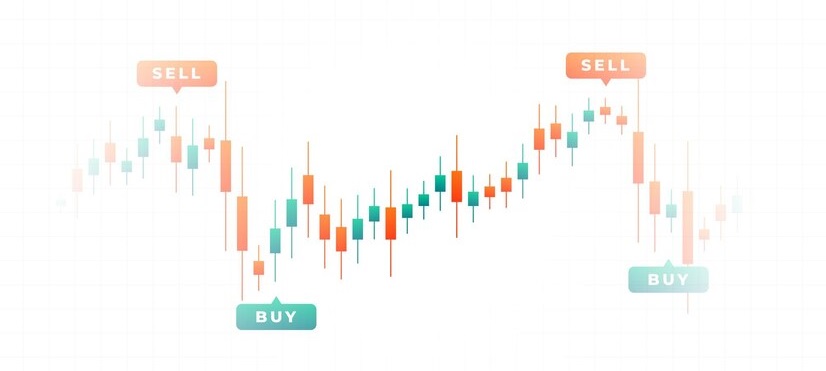
You must sign up for one of the stock trading simulators in order to begin your virtual stock trading experience. You can practice trading with this money.
Salient Points About Paper Trading
- Individuals who engage in paper trading, also known as virtual trading, replicate stock trading for educational purposes.
- Investors can trade in stocks without risking their own money, accumulate experience and understand different trading tactics. Through virtual trading platforms that replicate genuine trading accounts and offer a realistic trading environment, this is accomplished.
- Paper trading allows people to practice trading stocks without risking real money, with a primary concentration on the stock market.
- Paper trading simulators closely mirror real trading accounts, offering a useful learning opportunity.
Paper Trading Pros and Cons
| Paper Trading Pros | Paper Trading Cons |
| Risk-Free Environment: Allows traders to practice without risking your hard earned money. | Emotional Involvement: Since there is no real money at stake, traders may not experience the psychological effects of trading. |
| Learning Opportunity: Provides a platform for beginners to learn about the markets, strategies and trading tools. | Market Conditions: Market dynamics in paper trading may not accurately reflect real-world conditions, leading to false confidence. |
| Experimentation: Traders can test different trading strategies and techniques without financial repercussions. | No Real Profit/Loss: Success or failure in paper trading does not translate to actual financial gains or losses. |
| Feedback and Analysis: Enables traders to analyze performance, identify weaknesses and refine strategies. | Time-Consuming: Requires dedication and time to track trades, analyze data, and make improvements. |
| Accessibility: Can be easily accessed through online platforms or software, requiring only an internet connection. | |
| Cost-Effective: Does not require capital investment, making it accessible to traders with limited funds. |
Comparison Between Paper Trading vs. Real Trading
| Paper Trading | Real Trading |
| Helps people to learn and run various stock trading strategies in a virtual environment without investing real money. | Involves the use of actual money to invest or trade in the stock market. |
| Zero risk | Contains some level of risk |
| Until you get the knowledge to execute trades without fear of losing actual money in such transactions, you might experiment with different tactics. | Real trade involves actual money, and there is no time nor room for error correction. |
| Due to the fact that investors are aware there is no actual money being traded, they do not bring real-time emotions to the table. | Real trading evokes many emotions like greed, fear and more. |
How Paper Trading App Works?
In today’s fast-paced technological environment, using stock similar is no big thing. Here’s how it works:
Virtual Funds: When you sign up, the app provides a set amount of virtual capital. This is fake money that you can use to buy and sell stocks, commodities, or other financial instruments, just like you would in the real market.
Live Market Data: Most paper trading apps use real-time or delayed market data. This means you can see actual price movements and trends, giving you a realistic trading experience.
Trading Features: You can place various types of orders (market, limit, stop-loss, etc.), track your portfolio, and review past trades. The interface mimics real trading platforms, helping you get accustomed to the tools and strategies involved in trading.
Risk-Free Learning: Since no real money is involved, paper trading allows you to test strategies, learn how the market works, and build confidence without financial risk.
Performance Tracking: The app usually tracks your trades, offering insights into your performance, like profit/loss, win rate, and portfolio growth. This helps you learn from mistakes and refine your strategies.
List of Top 10 Best Paper Trading Apps in India For 2024
Looking to step into the world of trading with the best paper trading apps India? Here are some of the most popular paper trading applications in India to choose from.
1. TradingView – Most Popular Paper Trading Platform
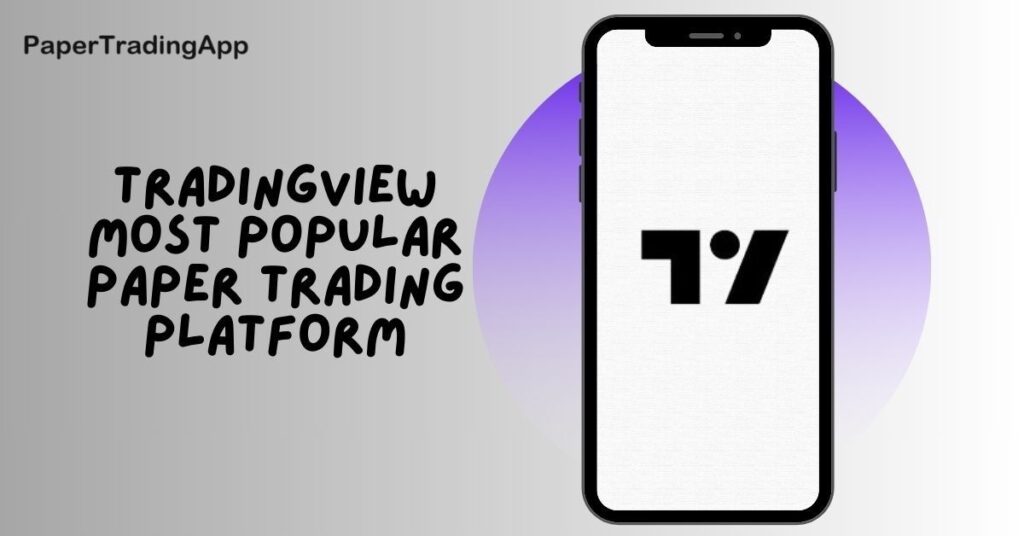
One of the best virtual stock trading websites or applications in India is TradingView. It offers resources like charts, technological tools, and more in terms of facilities. To begin your virtual trading experience, sign up for the tradingview application for free and connect to Paper Trading.
You should use Tradingview paper trading to practice live candlestick patterns, charts, or technical indicators tools while trading.
Why is TradingView the best?
The platform offers extensive technical analysis tools for traders who largely rely on technical analysis. Further, it offers stock screeners which will be an added benefit. You can also utilize the power of the TradingView community, which consists of millions of traders and investors who share their ideas and insights.
TradingView Features
- Real-time trading charts with numerous tools and indicators.
- The large and active community of traders and investors.
- Live market data for stocks, options, futures, forex, and cryptocurrencies.
- Integrates with a broker for direct trading.
- Offers powerful drawing tools for technical analysis.
- It also provides efficient stock screeners.
Why should you choose TradingView?
The platform is largely focused on technical analysis, so it will be best if you want to enhance your trading skills with advanced charting and analysis. However, you also need to learn fundamental analysis to trade as both of these go hand in hand and you can’t ignore the other.
TradingView Pros & Cons
| TradingView Pros | TradingView Cons |
| It provides comprehensive charts for in-depth market analysis. | It is not a dedicated paper trading platform, but rather a web-based charting platform. |
| The platform connects users with a large and active traders and investors community. | You need to have a premium plan to access some advanced features and tools. |
| It offers live market data for realistic trading practices. |
2. Moneybhai – Stock Market Virtual Trading App

One of the top virtual trading applications in India, Moneybhai is powered by Money Control. Upon registration, this platform offers Rs 1 crore in virtual currency in a portfolio account with a Rs 1 crore intraday trading cap. This virtual sum may be used to invest in a variety of asset types, including currencies, commodities, equities stocks, and derivatives. Bonds, fixed deposits, and mutual funds.
You may construct limit orders, market orders, GTD orders, square off orders, short selling orders, and GTC orders using this platform. Gaining experience in stock trading with Moneybhai requires overcoming investing hurdles. On this website, you may register using a Google ID, Facebook ID, or cellphone number. All you have to do to begin your simulated trading to establish a new account.
Why is Moneybhai the best?
The platform refers to itself as an investing simulation game. It lets you participate in various trading competitions which helps you learn through the gaming point of view. Along with this, you can also invest your virtual money in mutual funds and fixed deposits.
Moneybhai Features
- You can start with 1 crore virtual money and trade as you wish.
- Intraday trading limit Rs. 1 crore virtual money.
- Trade stocks with live prices and data.
- You can practice your trading skills in different scenarios.
- It lets you join contests and compete with other traders.
- It also allows you to see who’s doing well and learn from them.
- Offers investing in mutual funds and FDs.
Why should you choose Moneybhai?
Moenybhai gives the 1 crore virtual money in your portfolio account for practising trading. The interesting part is it also gives you an intraday trading limit of 1 crore virtual money. Further, the platform allows you to practice mutual fund investments and FDs.
Moneybhai Pros & Cons
| Moneybhai Pros | Moneybhai Cons |
| The platform offers Rs. 1 crore virtual money in your portfolio account. | There are not enough learning sources available on the platform. |
| Gives the intraday trading limit of Rs. 1 crore virtual money. | The user interface can be a little bit confusing for beginne |
| You get real-time market data for trading. | |
| Offers trading games to practice. | |
| It lets you participate in competitions to see how you rank. | |
| Offers a fun way to learn about the stock market. | |
| You can invest in mutual funds and FDs also. | |
| No need to have a Demat account for paper trading. |
3. FrontPage – Best Paper Trading App for Beginners

FrontPage is the best paper trading app designed for beginners who want to understand the intricacies of the market. This user-friendly platform enables paper trading in stocks, options and futures, providing a seamless experience. The interface is smooth and glitch-free, providing real-time data with minimal delay.
However, one notable limitation is the inability to partially exit volumes after a trade; Users are required to exit the entire situation. Available on both Android and iOS, Frontpage is not only comprehensive but also completely free, making it a top choice for paper trading enthusiasts.
Why is Frontpage beginners first choice?
The app provides a clean and simple user interface which is best for beginners. It also allows trading in various trading instruments including stock options and futures. Further, you can also test unlimited strategies on this app.
Features of FrontPage
● Clean and easy-to-use UI
● Offers unlimited strategy testing.
● Provides timely alerts.
● Lets you connect with 10 lac+ traders.
● Real-time market data with accuracy.
Why should you choose Frontpage?
Beginner traders looking for an easy-to-use interface with timely alerts can consider Frontpage as their best paper trading partner. With Frontpage you can test unlimited strategies and make your best strategy for the best result.
FrontPage Pros & Cons
| FrontPage Pros | FrontPage Cons |
| Suitable for beginners. | You have to exit the total quantity of shares and cannot exit half of your purchased shares. |
| Allows users to paper trade in stocks, options, and futures. | |
| Clean user interface. | |
| Real-time market data. |
4. Sensibull – India’s Largest Options Trading Platform

One of the first and largest options trading platforms in India is called Sensibull. With Sensibull, one can choose to practice options trading on the NIFTY, BANKNIFTY, and stocks without risking any real money.
It’s a great program, especially for newbies learning about options because it allows them to practice their trading plans and techniques in a simulated environment.
Why is Sensibull the best?
Sensibull offers advanced tools for paper trading, especially for options trading. The platform helps you learn and practice options trading with real-time market data and advanced options analysis. Further, you can also test your trading strategies and see how they perform in the market.
Sensibull Features
● You can learn and practice options trading with Sensibull.
● Up-to-date market data for options trading.
● Various tools and indicators to analyze options.
● Educational resources, especially for beginners.
● Allows you to test your trading strategies using live market data.
Why should you choose Sensibull?
You can consider choosing Sensibull if you want to master options trading and practice. Sensibull is a complete package for options traders, offering real-time market data, advanced options analysis, and learning resources, especially for options trading.
Sensibull Pros & Cons
| Sensibull Pros | Sensibull Cons |
| The platform majorly focuses on options trading. | They focus mainly on options trading, which may not be suitable for other types of trading. |
| It provides real-time market data, advanced option analysis, and learning resources. | You also need to have a paid subscription for some advanced features. |
| The platform also helps you test your trading strategies using live market data. |
5. Zerodha Streak – India’s Best Systematic Trading Platform
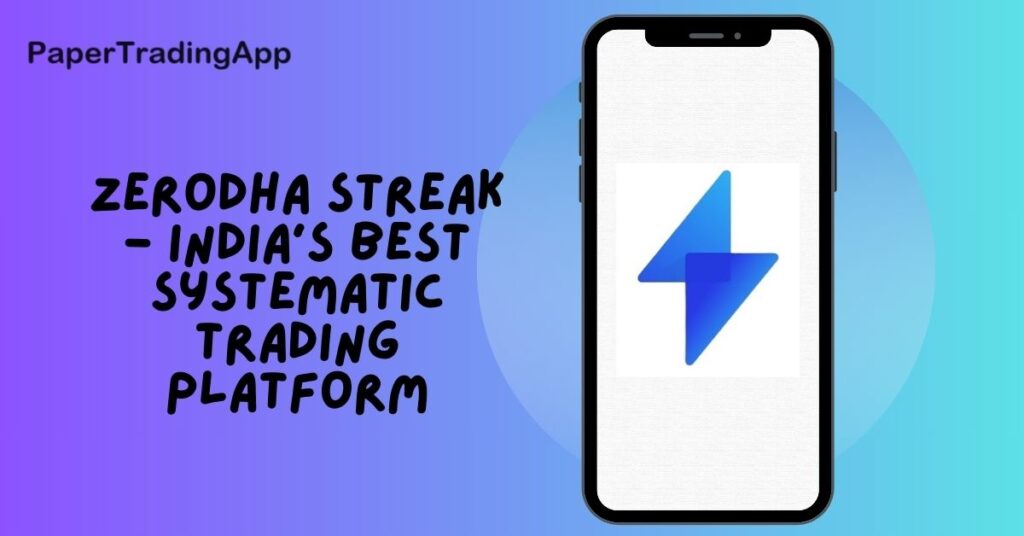
One of the best paper trading apps for retail traders is Streak by Zerodha, which enables users to develop, back test, and implement trading strategies live on the stock market. The app primarily focuses on three areas, including technical, tactics, and scanners, etc.
You may get rapid technical summaries for items like stocks, currencies, futures, commodities, etc. from technicals. One may look through many categories to learn new tactics and employ them for nothing.
Using the exclusive strategy builder developed by Streak, you can even develop your own original strategies.
Why is Zerodha Streak the best?
With Zerodha Streak you can create your trading strategies without coding and test them with real-time market data. Zerodha Streak allows you to trade in different asset classes. Further, Zerodha Streak also allows you to connect with your Zerodha Kite account and trade directly from the app.
Zerodha Streak Features
● You can create your strategies and backtest them.
● You can do strategy deployment as well as live trading.
● The platform gives you access to real-time market data, news, and analysis.
● Zerodha Kite integration.
Why should you Zerodha Streak?
Choosing Zerodha Streak helps you create trading strategies without coding knowledge. At the same time, it allows you to practice the strategies created by you with real-time market data. It is also a great app to trade different asset classes and markets with your Zerodha Kite account.
Zerodha Streak Pros & Cons
| Zerodha Streak Pros | Zerodha Streak Cons |
| Create, backtest, and deploy trading strategies without coding knowledge. | The app requires a Zerodha account to use the app. |
| Access real-time market data, news, and analysis. | It also requires a premium plan to access some features and tools. |
| The platform allows you to trade in various trading instruments including stocks, options, futures, commodities, and currencies. | There are no contests or rewards for paper trading. |
| You can connect with your Zerodha Kite account and trade directly from the app. |
6. Neostox – India’s Dedicated Virtual Stock Simulator
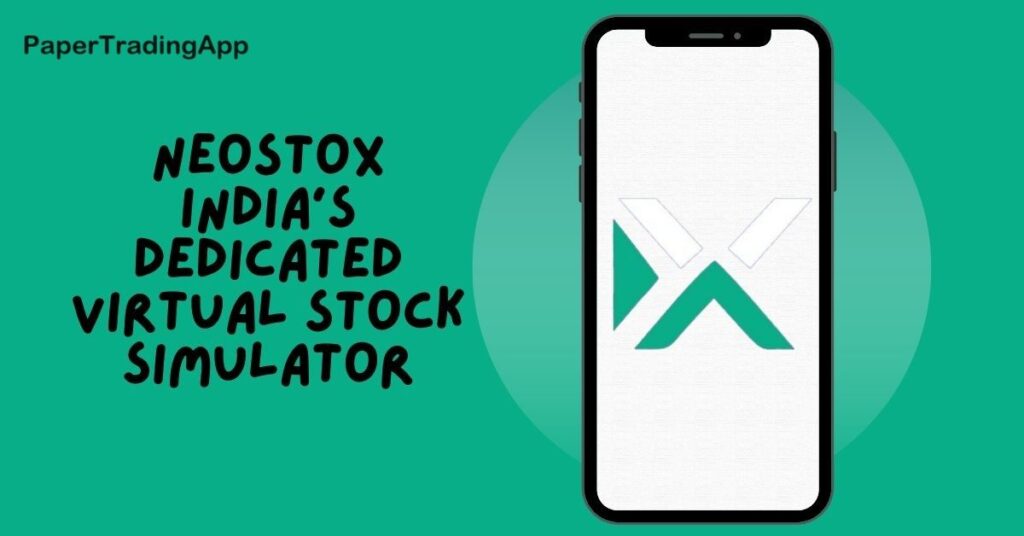
“Neostox Trading” is a user-friendly trade learning tool that helps users to learn more quickly and test their trading plans risk-free in the actual market.
Users can trade in stocks, futures, options, commodities, and other financial instruments using virtual funds up to $1 billion. Smart tools, analytics, basket orders, an options chain, hedge trading, screeners, and other features are also included with Neostox trading.
Why is Neostox the best?
Neostox Trading is ideal for those who want to try paper trading with large capital. The platform allows you to trade in stocks and more with real-time market data and use advanced tools to help you trade better.
Neostox Features
● Rs 1 crore of virtual money for trading stocks.
● Real-time market data.
● Advanced tools like options and index analyzers, basket orders, hedge trading, and options chain analysis.
● Tools for technical analysis to make your trading strategies better.
Why should you choose Neostox?
Choose Neostox trading if you want to practice your trading skills with more capital as the platform provides Rs. 1 crore of virtual money. It offers basket orders, hedge trading, options chain, screeners, and much more. It is also an easy-to-use platform that helps you learn faster.
Neostox Pros & Cons
| Neostox Pros | Neostox Cons |
| You can trade in stocks and more with Rs 1 crore of virtual money. | The platform does not provide enough learning resources. |
| Get real-time market data for analysis purposes. | To use this platform, you may need to have some prior knowledge of trading. |
| The platform also provides advanced tools like options and index analyzers, basket orders, hedge trading, and options chain analysis. |
7. Dalal Street – India’s Greatest Stock Trading Learning Simulated

Dalal Street is one of the greatest applications in India for learning simulated stock trading. It is a particular type of investment journal that, upon signing up and registering with your account, gives you Rs. 10 lakh as virtual money. The ability to experience real-time trading is the finest feature of this virtual trading program.
You may share your trading methods on this virtual trading platform, which helps you learn from others’ experiences and improve your stock trading abilities.
Why is Dalal Street the best?
Dalal Street offers numerous features for traders and investors to practice paper trading. It keeps you updated with the financial market happening with their feature called DSIJ Mindshare. Further, it also provides expert analysis based on stock recommendations and buy/sell notifications.
Dalal Street Features
- Virtual fund of Rs 1 crore to invest and trade as you wish.
- Real-time market data.
- Various investment strategies.
- Discussion group for interactions.
- It offers a feature called DSIJ Mindshare which lets you keep up with the important financial events for a specific day.
- It offers a stock screener feature.
- Provides stock recommendations on expert analysis and opinion.
Why should you choose Dalal Street?
The platform lets you practice paper trading with numerous tools like charting tools, screeners, and strategies. With the expert-backed stock recommendations, you will also get buy/ sell notifications of the same on the app. Dalal Street is also a great place to learn from other traders and investors to broaden your knowledge of the financial markets.
Dalal Street Pros & Cons
| Dalal Street Pros | Dalal Street Cons |
| You can receive a virtual fund of Rs 1 crore to invest and trade. | No other asset classes or markets are supported, only stocks. |
| Buy and sell stocks with real market data. | Website design may not be very appealing or user-friendly. |
| Test various investment strategies and explore the stock market. | |
| Interact with like-minded participants and share insights, ideas, and strategies. | |
| Offers buy-sell signals on the latest market movements. |
8. Webull: Free Trading Simulator

Users may practice stock trading risk- and commission-free with Webull’s free trading simulator. Users receive a limitless quantity of virtual currency to trade with.
Users may set up price alerts, see integrated charts with indicators, and get real-time quotations. You may perform indicator studies to your charts using 12 charting tools and more than 50 technical indicators.
As a result, they can quickly test out new trading techniques to evaluate what could be effective and what might not.
Why is Webull the best?
With Webull you can start paper trading from your demat account as the platform offers broker integration. For beginners, it also offers educational materials to help in understanding basic concepts. You can also trade different asset classes and markets.
Webull Features
- Real-time market data and virtual cash.
- Advanced charting tools and indicators.
- Trading multiple trading instruments such as stocks, options, futures, forex, and cryptocurrencies.
- Broker integration and direct trading.
- Educational materials
Why should you choose Webull?
With a wide range of technical analysis tools, the platform supports individuals in improving their trading skills by practising trading strategies with real-time market data and trading different asset classes. It helps you become a confident investment professional for trading with your broker account from the app.
Webull Pros & Cons
| Webull Pros | Webull Cons |
| You get access to real-time market data and virtual cash. | You need to have a premium plan to access some features and tools. |
| The platform provides advanced charting tools and indicators. | There are also no contests or rewards available for paper trading. |
| You can trade in stocks, options, futures, forex, and cryptocurrencies. | |
| The platform also offers broker integration and direct trading. | |
| You get various educational materials. |
9. Chart Mantra – Trading With Realistic Experience
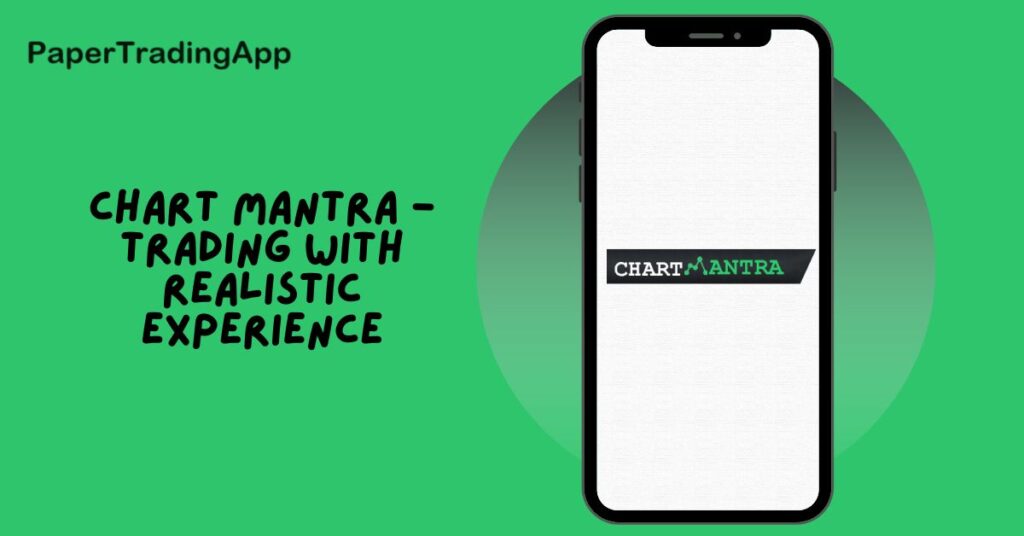
Chart Mantra is another top paper trading app in India that is supported by the Economic Times. You may study the art of investing and assess the stock market technically with this software. You will receive Rs 1 lakh in virtual currency upon signing up for this program, which you may use to trade in the stock market. You cannot, however, invest in more than one stock at once. You may use your Google ID or Facebook ID to sign up for the Chart Mantra platform.
Why Chart Mantra is the best?
Chart Mantra can be your favorite buddy for paper trading as it enables you to master the art of technical analysis and charting. It allows you to practice your trading skills with various technical indicators, tools, and patterns. Further, the platform supports trading in stocks, commodities, and currencies.
Chart Mantra Features
● You can start paper trading with Rs 1 lakh and retake it whenever you need more.
● The platform provides technical indicators, tools, and patterns to analyze market movements.
● Real-time stock market data.
● Allows you to talk to other traders and learn from them.
Why should you choose Chart Mantra?
The platform specialises in the best charting tools. It helps you to learn technical analysis in a simple infographic way and you can also make and test your trading strategies. It also offers various order types including stop-loss orders to practice executing stop-loss orders while managing emotions.
Chart Mantra Pros & Cons
| Chart Mantra Pros | Chart Mantra Cons |
| Access to various charts and technical tools. | The major focus of the platform is on technical analysis and hence it does not give enough importance to other trading aspects. |
| You can learn about charts perfectly on this platform. | The website might look a bit confusing if you are a beginner. |
| It gives you real-time stock market data. | |
| You can also connect and interact with other traders and investors. |
10. MoneyPot – Online Virtual Stock Market Trading Simulator
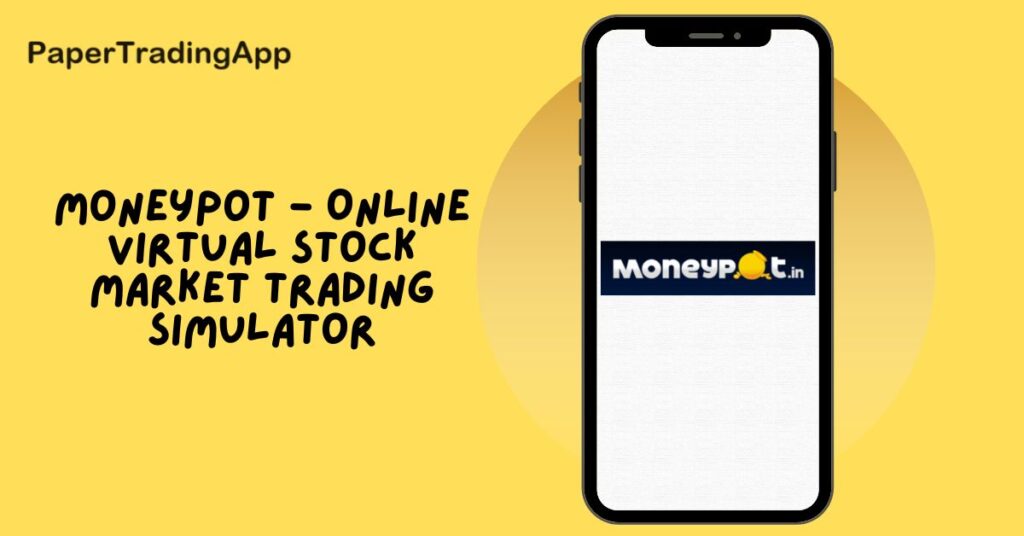
MoneyPot is a virtual trading simulator was developed with the intention of establishing a platform for communication among the investing community. Upon signing up, players are given a specific amount of simulated money, which they may use to look for stocks on the local exchange, place orders, get recommendations, and manage their portfolios. Due to a delay in the price feed, trade execution takes almost 10 minutes; nonetheless, calculations are made using the prices that the player selected when the order was placed.
Why is MoneyPot the best?
With MoneyPot you can learn trading by participating in paper trading competitions. You can also access educational resources to expand your knowledge. Further, MoneyPot is an easy-to-use and customizable platform that is suitable even for beginners.
MoneyPot Features
● Paper trading challenges and competitions.
● Virtual currency from Rs. 2 lakh.
● Different educational resources to learn more about investing.
● User-friendly platform.
Why should you choose MoneyPot?
With MoneyPot you can practice your investing skills and learn from other investors’ strategies. With its various features, it is the best platform for traders who want to gain practical knowledge. However, the platform does not allow you to trade for more than a certain amount per game in a single day.
MoneyPot Pros & Cons
| MoneyPot Pros | MoneyPot Cons |
| Participate in virtual trading challenges and competitions. | The free account has some limits in terms of advanced features. |
| The platform allows you to test your investment strategies. | You can trade in stocks only; no other trading instruments are available on this platform to trade. |
| You can enhance your trading and investing knowledge through educational materials. | |
| The platform is user-friendly and customizable. |
Conclusion
So far, you know that virtual trading and paper trading are same and its first and foremost purpose is to simulate an actual stock trading scenario to help new stock investors in understand trading basics, different trading strategies, and other elements without using the real money that can help them in doing actual stock trading. If you are keen to stock trading, you can choose from the best paper trading apps or websites in India that provide best-in-class virtual trading experience.
FAQs
1.Q. What is paper trading?
Ans:- Paper trading, also known as virtual trading is a type of simulated trading environment that allows individuals to practice trading without the use of real money. This is a risk-free trading mechanism that enables people to understand the basics of stock trading and different stock trading techniques.
2.Q. Can I do Intraday trading in virtual trading?
Ans:- Luckily, a majority of online brokers offer paper trading capabilities, allowing intraday traders to enhance their skills prior to making real money investments.
3.Q. Does it make sense to do paper trading?
Ans:- Paper trading is seen as helpful for beginning traders, but it may be helpful for anybody; even seasoned traders utilize it when creating a new strategy. Although you might be ready to start trading with real money, there are several benefits to paper trading.
4.Q. How does virtual trading help people?
Ans:- Virtual trading enables people to test their trading strategies in actual situations without putting their own money at risk. Therefore, investors should not be concerned about losing money.
5.Q. What is the importance of virtual or paper trading?
Ans:- Prior to entering the actual markets and making your own financial investments, paper trading enables you to get realistic trading experience. Before you enter the actual market and risk your own money, this might help you make better errors and learn from them. It is a risk-free way to test your trading approach and get useful information.
6.Q. Does paper trading bring in a profit?
Ans:- Since paper trading doesn’t use real money, you can’t actually earn from it. Prior to engaging in actual trading, it aids you in gaining experience and honing your techniques.
7.Q. Is paper trading risk-free?
Ans:- Since there is no actual money exchanged, paper trading carries no risk in terms of potential financial losses. However, it’s crucial to keep in mind that in live trading, market dynamics may vary and that decision-making is influenced by emotions.
8.Q. How similar is your virtual stock exchange to actual trading?
Ans:- Although there are some significant changes, it is fairly similar. For instance, most platforms charge a 3% interest rate on any cash you have in your account, which is probably not the interest you would receive in a savings account at any given time of the year. The actual trading mechanics, however, are quite comparable to trading in the real world since we complete all orders at the real-time bid ask prices.
